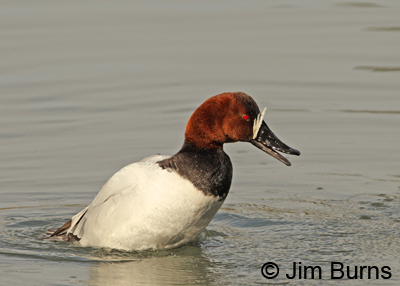
Funny how birders will go along, sometimes years, without a thought for some common species, then have several encounters with that species in a short time frame which brings a fuller, more nuanced appreciation for it. In Costa Rica this Christmastime, accompanied by arguably the best field guide in that country, we casually scanned a raft of ducks gathered in a lake above a dam, too distant for identification with binoculars. Steven suggested I put the 2x on my lens, take a series of photos, then enlarge them on the camera’s LCD screen. The resulting images would be terribly grainy but at least diagnostic, and he was curious to know what species were out there.
Having done so, I began to call off in a casual monotone, what I was seeing on the back of the camera—“Ring-neckeds, scaup, wigeon”—certainly nothing exciting for veteran North American birders without any knowledge, or interest for that matter, in Costa Rican ducks amidst the bounty of tropical passerines we were seeing for the first time. “Looks like a Canvasback” I continued, whereupon Steven came out of his skin, ran to the camera exclaiming and expostulating , and pushed me out of the way to look for himself. It was the first documented record for Canvasback in the country! Presumably the severe drought in south Texas this winter pushed several duck species way southward beyond their expected winter range.
A month later I was freezing my ass off in Iowa photographing Bald Eagles congregating at open water below a lock & dam along the Mississippi River. Overwintering at the same spot was a pure raft of Canvasbacks numbering in the hundreds(!), drifting back and forth, tipping up and diving for food in synchronicity reminiscent of spectator waves at sports events. It was a spectacular sight.
Another month and I was at a local park, hoping to photograph the Osprey that frequents the fishing lake there. On this particular morning there was no Osprey action, but a lone male Canvasback added color and interest to a mixed flock of Ring-neckeds and Lesser Scaup. The Can seemed loyal to one particular area of the lake. Intrigued, I hung out and discovered what held his interest was a White Amur (Grass Carp) carcass that he had apparently found on the bottom and kept dragging to the top and stripping. Canvasbacks are diving ducks. They do not have serrated bills and the upper mandible nail is small. I had no idea they would eat fish, albeit already dead ones they obviously didn’t catch themselves. This led to a little research.
The Canvasback is one of our largest and most beautiful ducks and also one of the most studied, Aythya valisineria, named for Vallisneria americana, wild celery whose winter buds and rhizomes are the staple of its nonbreeding diet. Cans have small gizzards and low fiber digestive systems and are known to feed on clams, snails, and insect larvae. It took a lot of digging to also find reference to one study which did find finger Alewives in their stomachs. Canvasbacks do eat fish, just another example of opportunistic behavior which species adopt to survive. And just another reason why I am a birder—always new and unexpected things to observe and learn. It won’t happen unless you’re out in the field.